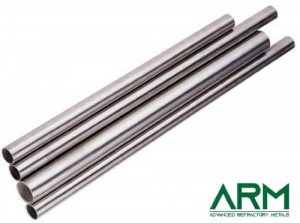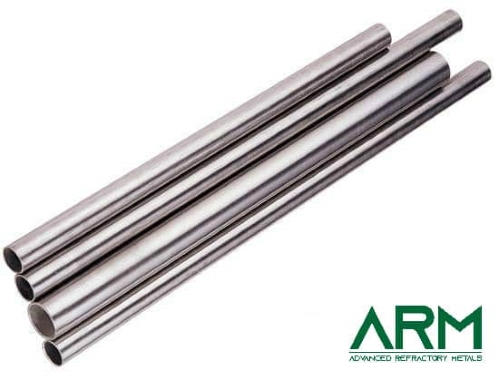Introduction
Tantalum and platinum capillaries are both high-performance materials used in specialized applications where durability, corrosion resistance, and biocompatibility are essential. While both metals share some similarities, their distinct properties make each suitable for different uses. Here’s a comparison of tantalum and platinum capillaries, highlighting their properties, applications, and the benefits of each.

1. Material Properties
| Property | Tantalum | Platinum |
| Density | 16.6 g/cm³ | 21.45 g/cm³ |
| Melting Point | 3,017°C | 1,768°C |
| Corrosion
Resistance |
High,
especially in acidic environments |
Excellent,
highly resistant to most chemicals |
| Biocompa
-tibility |
Biocompatible
and biologically inert |
Biocompatible
and often used in implants |
| Thermal
Conductivity |
57 W/m·K | 72 W/m·K |
| Electrical
Conductivity |
Moderate | Very high |
| Cost | Generally
lower than platinum |
Greatly
higher |
2. Corrosion Resistance
– https://en.wikipedia.org/wiki/Tantalum: Tantalum capillaries are highly resistant to corrosion, particularly against strong acids like hydrochloric acid and sulfuric acid. This makes tantalum an excellent choice in environments involving aggressive chemicals, such as in chemical processing and acid transfer.
– Platinum: Platinum has exceptional resistance to most chemicals, including acids and alkalis. It also resists oxidation at high temperatures, which is beneficial in extreme environments. However, platinum’s resistance to highly reactive fluorinated compounds is limited, where tantalum might perform better.
3. Biocompatibility
– Tantalum: Tantalum is biocompatible and inert, making it suitable for medical implants and surgical instruments. Its ability to integrate well with human tissue without causing adverse reactions has made it a common choice in medical applications.
– Platinum: Platinum is also biocompatible and highly resistant to bodily fluids, which makes it a popular choice in medical and dental applications, including pacemaker leads and stents. Its inert nature minimizes risks of immune reactions.
4. Temperature Stability
– Tantalum: With a melting point of 3,017°C, tantalum capillaries can withstand extremely high temperatures, making them ideal for use in environments that demand thermal stability, such as aerospace components and high-temperature reactors.
– Platinum: While platinum’s melting point of 1,768°C is lower than that of tantalum, it is still suitable for high-temperature applications, particularly where resistance to oxidation is required. Platinum’s stability at high temperatures makes it suitable for use in laboratory and electronic applications.
5. Electrical and Thermal Conductivity
– Tantalum: Tantalum has moderate electrical and thermal conductivity, which makes it suitable for some electronics applications, but it is not as conductive as platinum. This moderate conductivity can limit its use in applications requiring highly efficient heat dissipation or electrical transmission.
– Platinum: Platinum has high electrical and thermal conductivity, making platinum capillaries valuable in high-precision electronic components and thermocouples. Its excellent conductivity also supports its use in laboratory and industrial processes where accurate temperature measurements and stable electrical contacts are needed.
6. Applications
- Tantalum Capillaries:
– Chemical Processing: Used in environments with strong acids and corrosive fluids.
– Medical Implants: Popular for implants and surgical instruments due to biocompatibility.
– High-Temperature Applications: Suitable for aerospace, fuel handling, and vacuum systems.
- Platinum Capillaries:
– Medical Devices: Used in pacemakers, stents, and dental implants due to biocompatibility and inertness.
– Laboratory Applications: Platinum capillaries are frequently used in laboratory equipment, thermocouples, and precision temperature sensors because of their thermal and electrical conductivity.
– Electronics: Applied in high-end electronics where conductivity and stability are needed, such as in specialized circuit components and electrodes.
7. Cost Considerations
– Tantalum: Tantalum is typically more affordable than platinum, making it a cost-effective option for applications where high-temperature and corrosion resistance are needed without the premium cost of platinum.
– Platinum: Platinum is considerably more expensive due to its rarity and high demand in specialized applications. However, its superior electrical and thermal conductivity, combined with its excellent corrosion resistance, can justify the higher cost in applications where performance is prioritized over cost.
Choosing Between Tantalum and Platinum Capillaries
When selecting between tantalum and platinum capillaries, the choice largely depends on the specific requirements of the application:
- Choose Tantalum Capillaries if:
– High melting point and thermal stability are critical.
– The environment involves exposure to highly corrosive acids.
– Cost is a major factor, and a more affordable option is preferred.
– The application requires biocompatibility without high electrical conductivity.
- Choose Platinum Capillaries if:
– High electrical and thermal conductivity are required, such as in electronics and precision laboratory equipment.
– Biocompatibility is essential, especially in sensitive medical devices like pacemakers.
– The application requires excellent corrosion resistance in both acidic and alkali environments, but without cost constraints.
Conclusion
Tantalum and platinum capillaries each offer unique advantages, making them suitable for different applications. Tantalum capillaries excel in high-temperature and highly corrosive environments, providing durability at a lower cost. Platinum capillaries, on the other hand, bring exceptional conductivity and stability, making them ideal for high-precision medical and electronic applications where performance is key. For more information, please check Advanced Refractory Metals (ARM).
